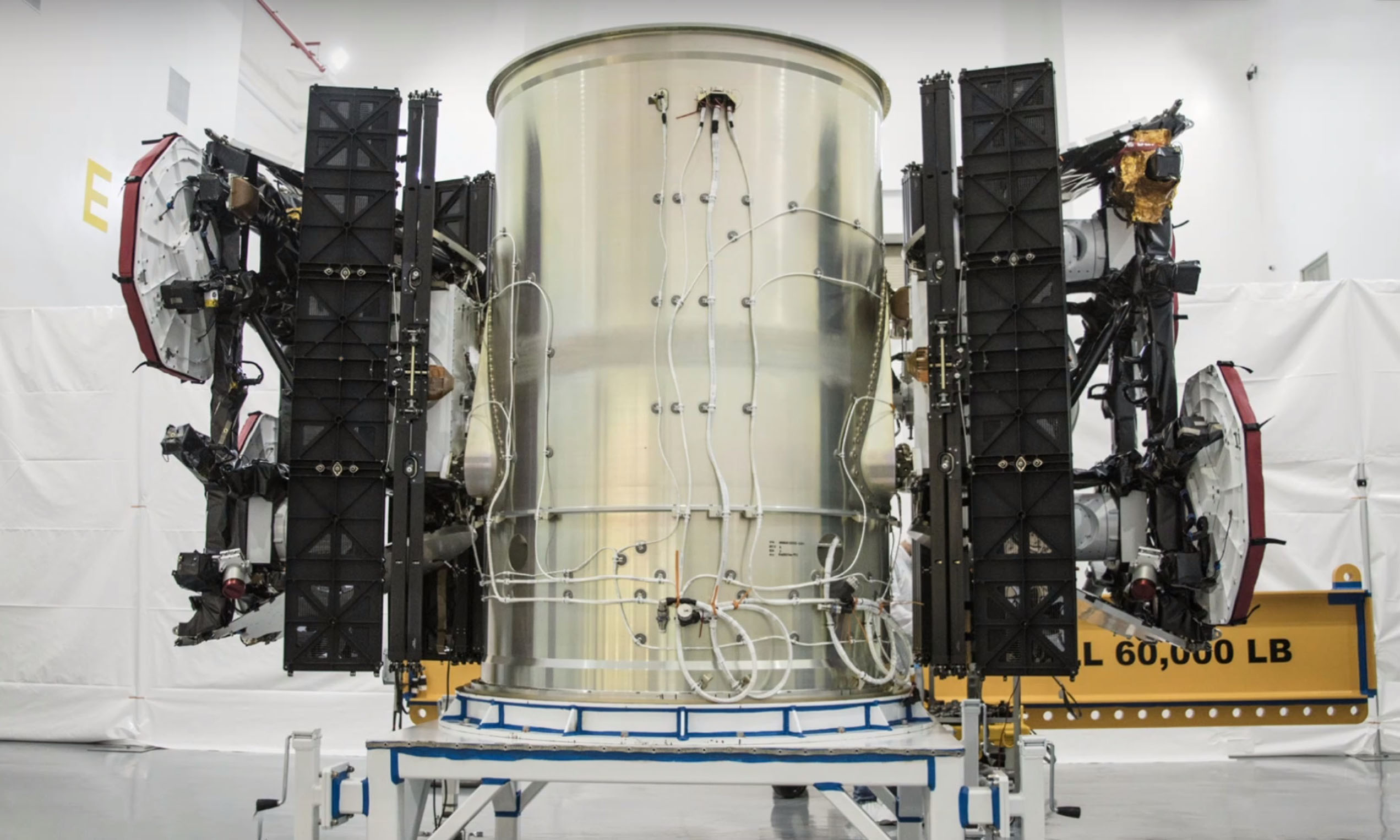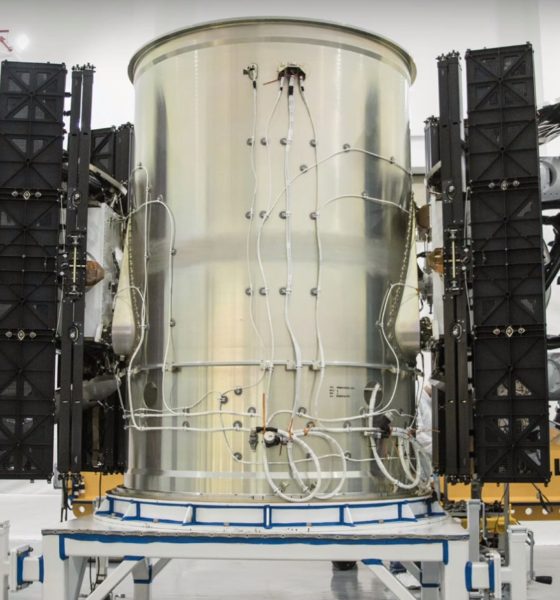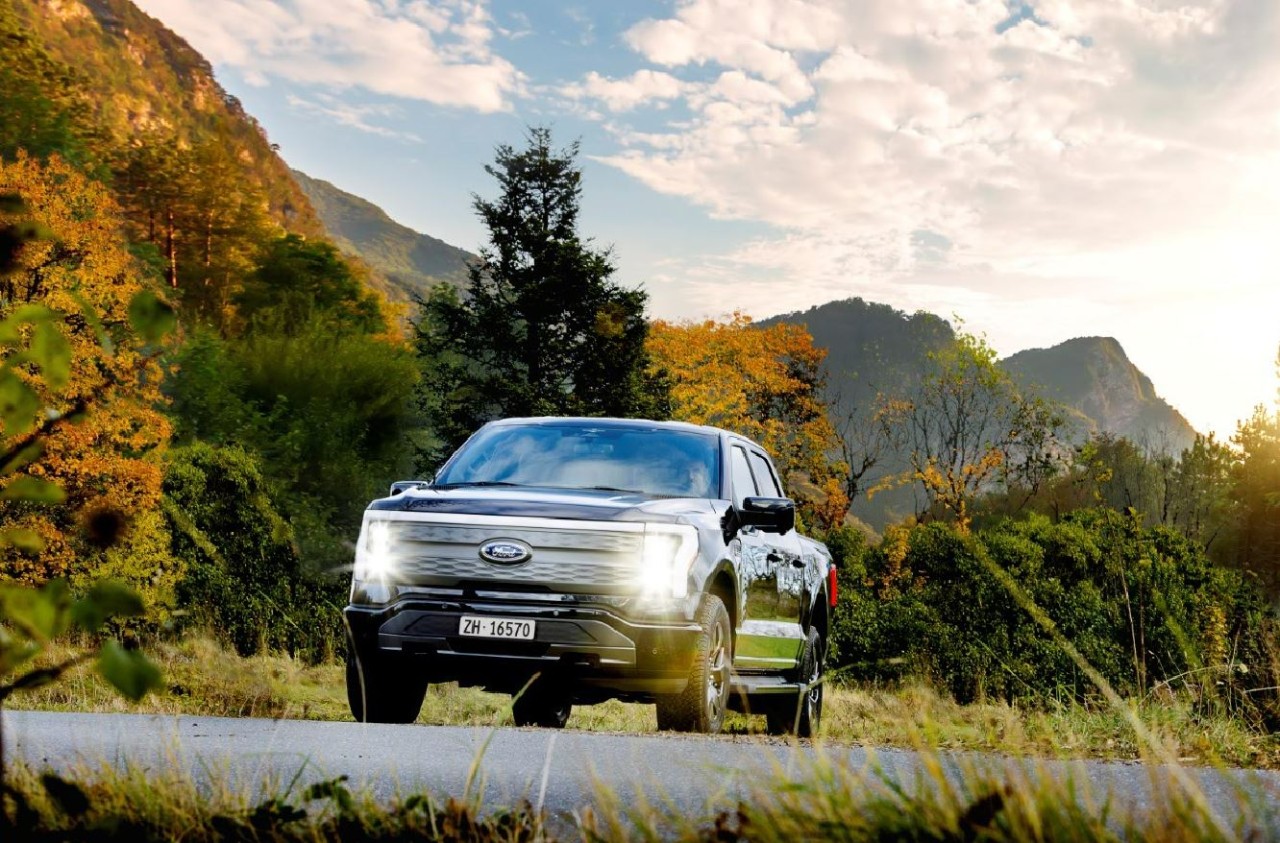

News
SpaceX’s first batch of Starlink satellites already in Florida for launch debut
According to an official statement, SpaceX’s satellite mass production is “well underway” and the first batch of operational Starlink satellites are already in Florida for their May 2019 launch debut.
Simultaneously, the FCC has granted SpaceX’s request to modify the deployment of its first 1584 Starlink satellites, permitting the company to lower their orbit from approximately 1150 km to 550 km (715 mi to 340 mi). A lower insertion orbit should improve Falcon 9’s maximum Starlink payload, while the lower operational orbit will help to further minimize any risk posed by orbital debris that could be generated by failed SpaceX satellites.
Above all else, SpaceX’s confirmation that the first batch of Starlink satellites are already in Florida drives home the reality that the company’s internet satellite constellation is about to become very real. Said constellation has long been the subject of endless skepticism and criticism, dominated by a general atmosphere of dismissal. There is no doubt that Starlink, as proposed, is an extraordinarily ambitious program that will cost billions of dollars to even begin to realize. SpaceX will have to find ways to affordably manufacture and launch ~11,900 satellites – together weighing something like 500 metric tons (1.1 million lbs) – in as few as nine years, start to finish.
As of November 2018, there are roughly 2000 satellites operating in Earth orbit, meaning that SpaceX’s full Starlink constellation would increase the number of functional satellites in orbit by a factor of almost seven. Just the first phase of Starlink (4409 satellites) would more than triple the number of working satellites in orbit. To meet the contractual requirement that SpaceX launch at least half of Starlink’s licensed satellites within six years of the FCC granting the constellation license, the company will need to launch an average of ~37 satellites per month between now and April 2024. By April 2027, SpaceX will either have to launch all ~2200 remaining Phase 1 satellites or risk forfeiture of its Starlink constellation license. Same goes for the ~7500 very low Earth orbit (VLEO) satellites making up Starlink’s second phase, albeit with their launch deadlines instead in November of 2024 and 2027.

In fact, if SpaceX wants to preserve the separate FCC license for its VLEO Starlink segment, it will actually need to build and launch an average of 100 satellites per month – 20+ per week – for the next five years. In no way, shape, or form is the monthly production of 100 complex pieces of machinery unprecedented. It is, however, entirely unprecedented – and by a factor of no less than 10 – in the spaceflight and satellite industries. Accomplishing that feat will require numerous paradigm shifts in satellite design, manufacturing, and operations. It’s hard to think of anyone more up to the challenge than SpaceX but it will still be an immensely difficult and expensive undertaking.
“Baby” steps
According to SpaceX, the first 75 operational Starlink satellites will be significantly less refined than those that will follow. Most notably, they will eschew dual-band (Ku and Ka) phased array antennas, instead relying solely on Ka-band communications. The second main difference between relates to “demisability”, referring to characteristics exhibited during reentry. The first 75 spacecraft will be less refined and thus feature a handful of components that are expected to survive the rigors of reentering Earth’s atmosphere, creating a truly miniscule risk of property damage and/or human injuries. Subsequent Starlink vehicles will incorporate design changes to ensure that 100% of each satellite is incinerated during reentry, thus posing a ~0% risk on the ground.
In a sense, the first 75 Starlink satellites will be an in-depth demonstration of SpaceX’s proposed constellation. Depending on how the satellites are deployed in orbit, SpaceX’s development team could potentially have uninterrupted access to the orbiting mini-constellation. There will also be constant opportunities to thoroughly test SpaceX’s network architecture for real, including general downlink/uplink traffic, surge management, satellite handoffs, and the laser interlinks meant to join all Starlink satellites into one giant mesh network.

SpaceX has yet to announce the precise number of Starlink satellites that will be aboard Falcon 9 on the rocket’s first dedicated internal launch. More likely than not, the constraining factor will be the usable volume of SpaceX’s payload fairing, measuring 5.2m (17 ft) in diameter. For Flight 1, 10-20 satellites is a reasonable estimate. Likely to weigh around 10,000 kg (22,000 lb) total, the first Starlink payload will be delivered to a parking orbit of ~350 km (220 mi), easily allowing Falcon 9 to return to SpaceX’s Florida Landing Zone or perform a gentle landing aboard drone ship Of Course I Still Love You (OCISLY). The satellites will use their own electric Hall thrusters to reach their final destination (550 km).
According to SpaceX CEO Elon Musk, the first Falcon 9 fairing reuse may also happen during an internal Starlink launch, although it’s unclear if he was referring to Starlink Launch 1 (Starlink-1) or a follow-up mission later this year.
For now, SpaceX is targeting a mid-May for its first dedicated Starlink mission, set to launch from Launch Complex 40 (LC-40). Up next for LC-40 is SpaceX’s 17th operational Cargo Dragon launch (CRS-17), delayed from April 26th and April 30th to May 3rd.
Check out Teslarati’s Marketplace! We offer Tesla accessories, including for the Tesla Cybertruck and Tesla Model 3.

News
Ford cancels all-electric F-150 Lightning, announces $19.5 billion in charges
“Rather than spending billions more on large EVs that now have no path to profitability, we are allocating that money into higher returning areas, more trucks and van hybrids, extended range electric vehicles, affordable EVs, and entirely new opportunities like energy storage.”

Ford is canceling the all-electric F-150 Lightning and also announced it would take a $19.5 billion charge as it aims to quickly restructure its strategy regarding electrification efforts, a massive blow for the Detroit-based company that was once one of the most gung-ho on transitioning to EVs.
The announcement comes as the writing on the wall seemed to get bolder and more identifiable. Ford was bleeding money in EVs and, although it had a lot of success with the all-electric Lightning, it is aiming to push its efforts elsewhere.
It will also restructure its entire strategy on EVs, and the Lightning is not the only vehicle getting the boot. The T3 pickup, a long-awaited vehicle that was developed in part of a skunkworks program, is also no longer in the company’s plans.
Instead of continuing on with its large EVs, it will now shift its focus to hybrids and “extended-range EVs,” which will have an onboard gasoline engine to increase traveling distance, according to the Wall Street Journal.
“Ford no longer plans to produce select larger electric vehicles where the business case has eroded due to lower-than-expected demand, high costs, and regulatory changes,” the company said in a statement.
🚨 Ford has announced it is discontinuing production of the F-150 Lightning, as it plans to report a charge of $19.5 billion in special items.
The Lightning will still be produced, but instead with a gas generator that will give it over 700 miles of range.
“Ford no longer… pic.twitter.com/ZttZ66SDHL
— TESLARATI (@Teslarati) December 15, 2025
While unfortunate, especially because the Lightning was a fantastic electric truck, Ford is ultimately a business, and a business needs to make money.
Ford has lost $13 billion on its EV business since 2023, and company executives are more than aware that they gave it plenty of time to flourish.
Andrew Frick, President of Ford, said:
“Rather than spending billions more on large EVs that now have no path to profitability, we are allocating that money into higher returning areas, more trucks and van hybrids, extended range electric vehicles, affordable EVs, and entirely new opportunities like energy storage.”
CEO Jim Farley also commented on the decision:
“Instead of plowing billions into the future knowing these large EVs will never make money, we are pivoting.”
Farley also said that the company now knows enough about the U.S. market “where we have a lot more certainty in this second inning.”
News
SpaceX shades airline for seeking contract with Amazon’s Starlink rival

SpaceX employees, including its CEO Elon Musk, shaded American Airlines on social media this past weekend due to the company’s reported talks with Amazon’s Starlink rival, Leo.
Starlink has been adopted by several airlines, including United Airlines, Qatar Airways, Hawaiian Airlines, WestJet, Air France, airBaltic, and others. It has gained notoriety as an extremely solid, dependable, and reliable option for airline travel, as traditional options frequently cause users to lose connection to the internet.
Many airlines have made the switch, while others continue to mull the options available to them. American Airlines is one of them.
A report from Bloomberg indicates the airline is thinking of going with a Starlink rival owned by Amazon, called Leo. It was previously referred to as Project Kuiper.
American CEO Robert Isom said (via Bloomberg):
“While there’s Starlink, there are other low-Earth-orbit satellite opportunities that we can look at. We’re making sure that American is going to have what our customers need.”
Isom also said American has been in touch with Amazon about installing Leo on its aircraft, but he would not reveal the status of any discussions with the company.
The report caught the attention of Michael Nicolls, the Vice President of Starlink Engineering at SpaceX, who said:
“Only fly on airlines with good connectivity… and only one source of good connectivity at the moment…”
CEO Elon Musk replied to Nicolls by stating that American Airlines risks losing “a lot of customers if their connectivity solution fails.”
American Airlines will lose a lot of customers if their connectivity solution fails
— Elon Musk (@elonmusk) December 14, 2025
There are over 8,000 Starlink satellites in orbit currently, offering internet coverage in over 150 countries and territories globally. SpaceX expands its array of satellites nearly every week with launches from California and Florida, aiming to offer internet access to everyone across the globe.
Currently, the company is focusing on expanding into new markets, such as Africa and Asia.
News
Tesla Model Y Standard stuns in new range test, besting its Premium siblings
Tesla’s newer vehicles have continued to meet or exceed their EPA estimates. This is a drastic change, as every 2018-2023 model year Tesla that Edmunds assessed did not meet its range estimates.

The Tesla Model Y Standard stunned in a new range test performed by automotive media outlet Edmunds, besting all of its Premium siblings that are more expensive and more luxurious in terms of features.
Testing showed the Model Y Standard exceeded its EPA-estimated range rating of 321 miles, as Edmunds said it is the “longest-range Model Y that we’ve ever put on our loop.” In the past, some vehicles have come up short in comparison with EPA ranges; for example, the Model Y’s previous generation vehicle had an EPA-estimated range of 330 miles, but only drove 310.
Additionally, the Launch Series Model Y, the first configuration to be built in the “Juniper” program, landed perfectly on the EPA’s range estimates at 327 miles.
It was also more efficient than Premium offerings, as it utilized just 22.8 kWh to go 100 miles. The Launch Series used 26.8 kWh to travel the same distance.
It is tested using Edmunds’ traditional EV range testing procedure, which follows a strict route of 60 percent city and 40 percent highway driving. The average speed throughout the trip is 40 MPH, and the car is required to stay within 5 MPH of all posted speed limits.
Each car is also put in its most efficient drive setting, and the climate is kept on auto at 72 degrees.
“All of this most accurately represents the real-world driving that owners do day to day,” the publication says.
With this procedure, testing is as consistent as it can get. Of course, there are other factors, like temperature and traffic density. However, one thing is important to note: Tesla’s newer vehicles have continued to meet or exceed their EPA estimates. This is a drastic change, as every 2018-2023 model year Tesla that Edmunds assessed did not meet its range estimates.
Tesla Model Y Standard vs. Tesla Model Y Premium
Tesla’s two Model Y levels both offer a great option for whichever fits your budget. However, when you sit in both cars, you will notice distinct differences between them.
The Premium definitely has a more luxurious feel, while the Standard is stripped of many of the more premium features, like Vegan Leather Interior, acoustic-lined glass, and a better sound system.
You can read our full review of the Model Y Standard below:
Tesla Model Y Standard Full Review: Is it worth the lower price?








